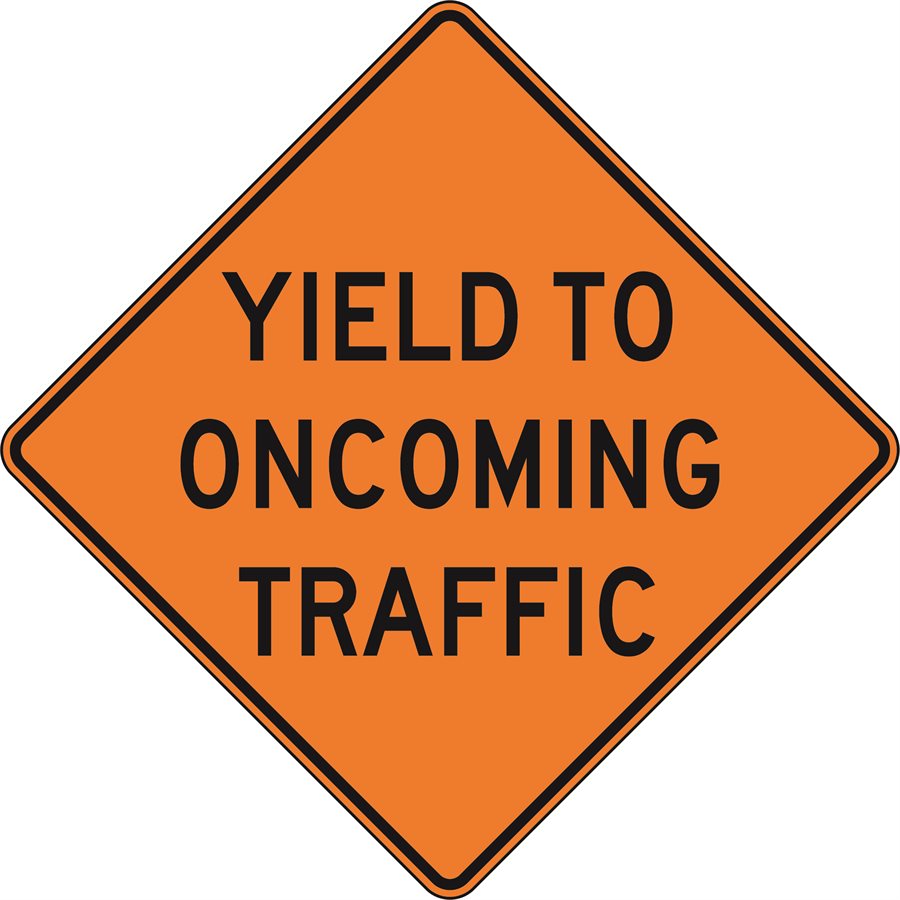
Yield To Traffic
Yield to Oncoming Traffic. An additional placard that may accompany a yield sign. If you see this placard, you are required to yield the right-of-way to traffic traveling in the opposite direction. YIELD TO ONCOMING TRAFFIC sign and other regulatory traffic signs! Everything you need to know about the "yield to oncoming traffic" sign!
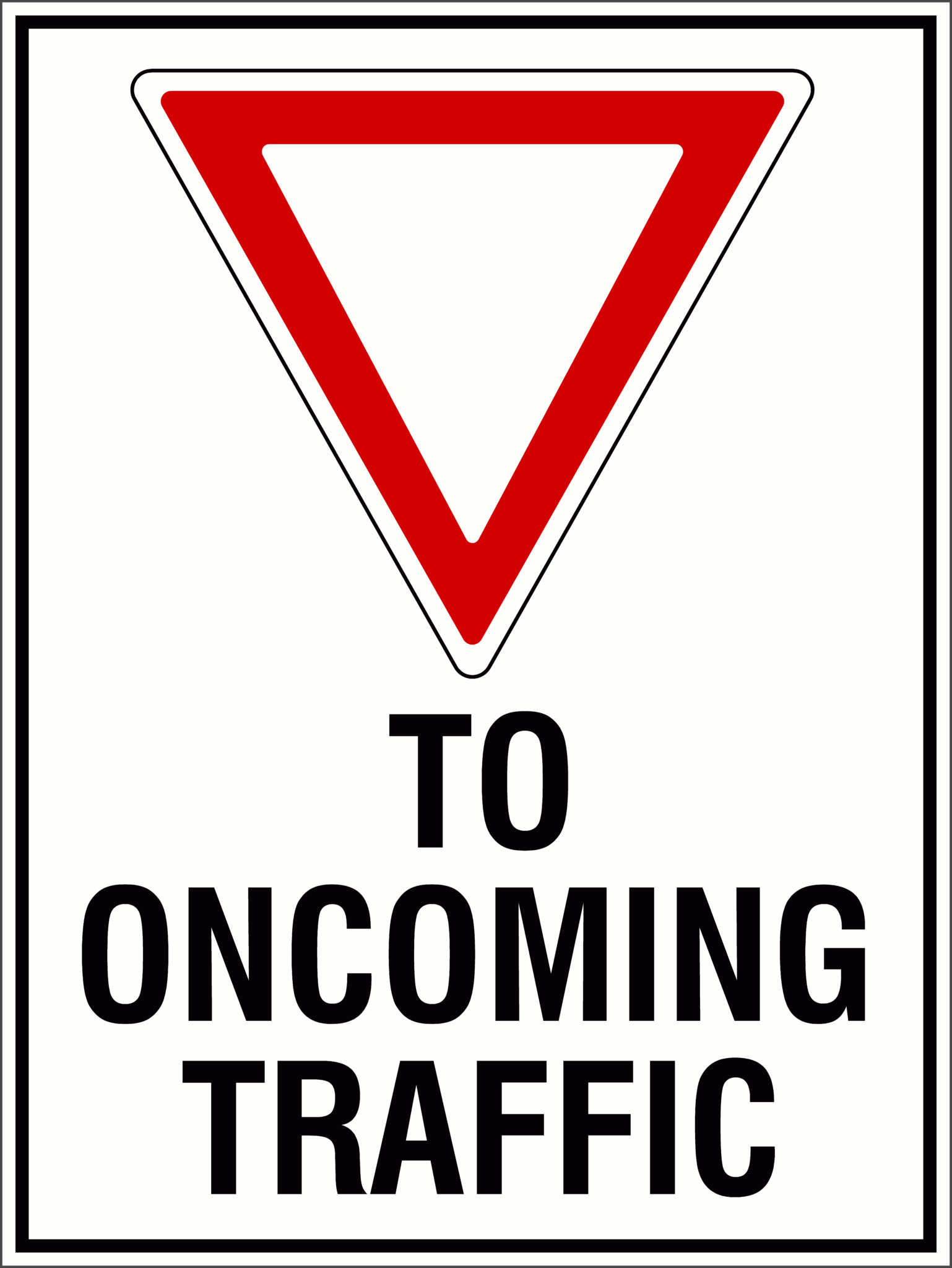
Yield to Traffic Legacy Signs and Graphics
A yield sign is one of the most important traffic signs on the road. It indicates to drivers that they must slow down and yield to oncoming traffic or pedestrians. The word "Yield" means "to concede" or "to give up (an advantage)", which has a similar meaning in driving - to give the right of way to a pedestrian or another vehicle.

Who Goes First at Controlled Intersections? STOP & YIELD Signs
Move into the median, and yield the right of way to the oncoming traffic. Once there is an opening, you can complete your turn. Turning Left onto a Straightaway with a vehicle in the median: Every once in a while, you'll be trying to turn onto a straight away, and you'll find someone already in the median—right where you need to be! The.

Do Not Pass When Traffic Traffic Supply 310SIGN
A yield sign is a regulatory traffic sign used to instruct drivers to slow down and prepare to stop if necessary, giving the right-of-way to pedestrians and oncoming traffic. The primary purpose of this sign is to ensure that traffic flows smoothly and safely, especially at intersections where two roads merge or intersect.

Yield To Traffic Traffic Supply 310SIGN
The YIELD TO ONCOMING TRAFFIC sign must be used within temporary conditions works where only one lane is available for traffic and the traffic volume is too low to warrant the installation of portable lane control signals or the use of Traffic Control Persons (TCPs) on duty 24 hours per day. MTO Book Location: Book 5, Pg. 139. Reflective.
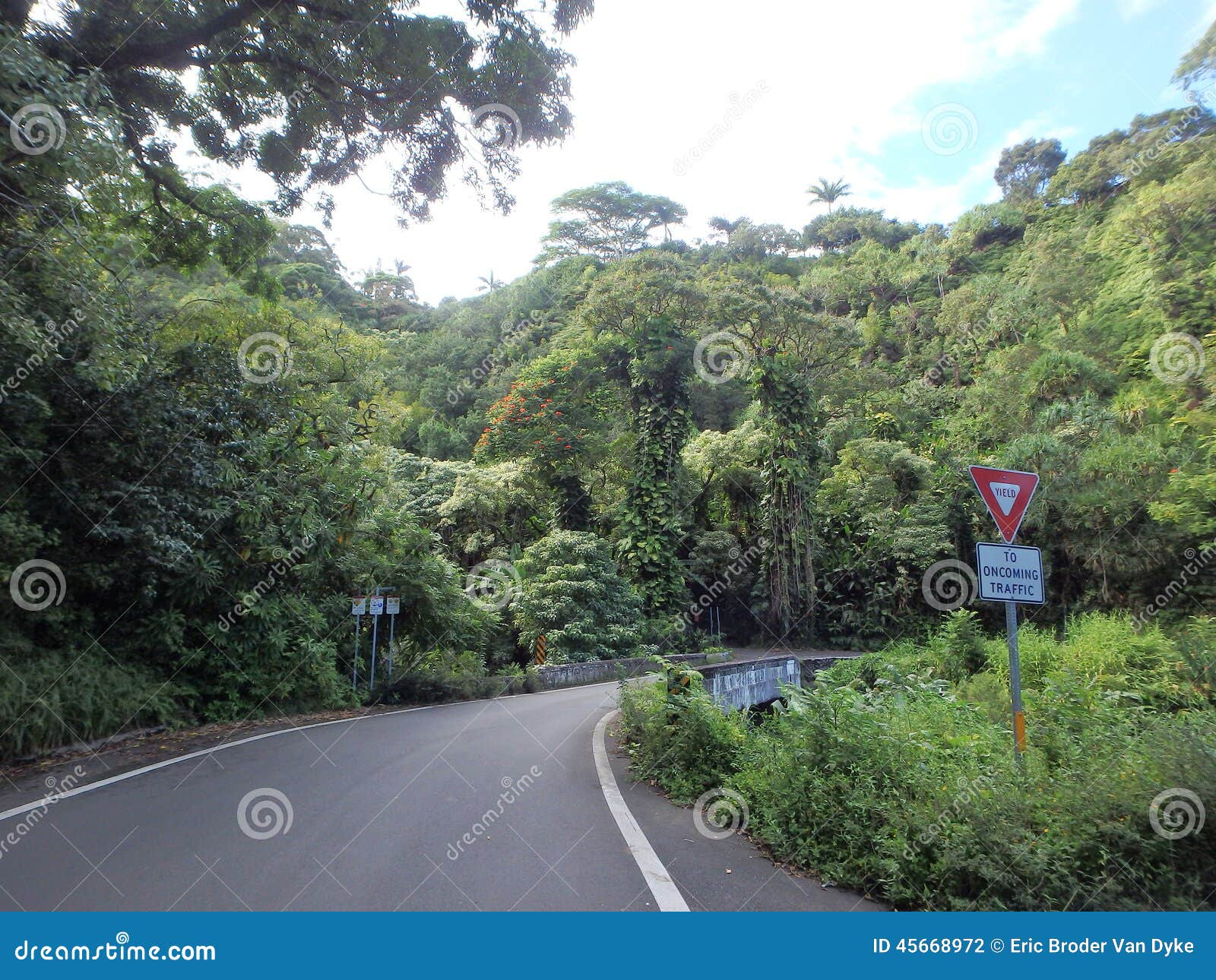
One Lane Bridge with Yield To Traffic Sign Stock Photo Image of background, bridge
02 The YIELD sign assigns right-of-way to traffic on certain approaches to an intersection. Vehicles controlled by a YIELD sign need to slow down to a speed that is reasonable for the existing conditions or stop when necessary to avoid interfering with conflicting traffic. Section 2B.09 YIELD Sign Applications. Option: 01 YIELD signs may be.
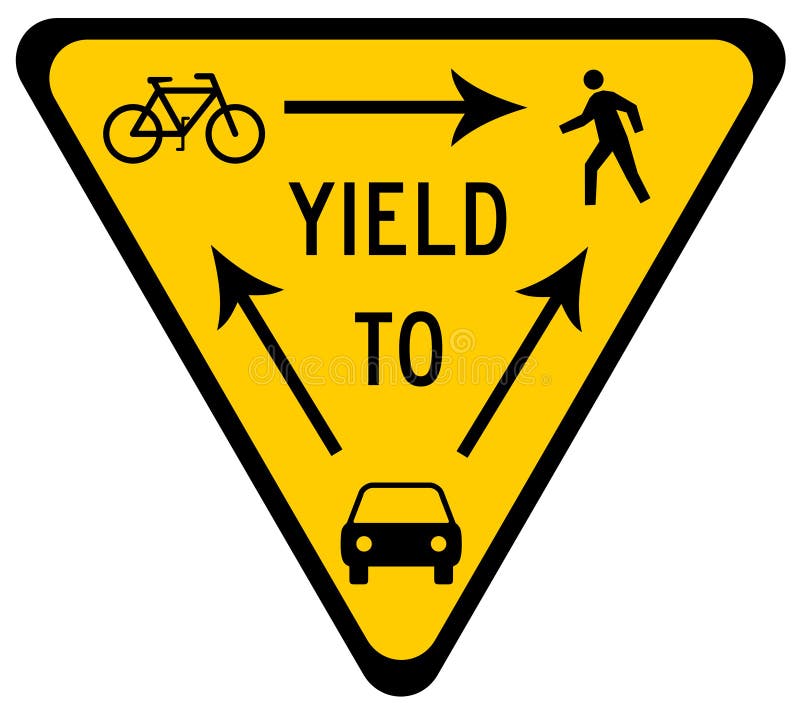
Traffic yield stock illustration. Illustration of vehicle 37879995
Yield signs are regulatory traffic signs. Regulatory signs are there to tell drivers what to do. They regulate such things as speed, passing, and lane use. Regulatory signs must be obeyed in the same way as all other traffic laws. Slow down and prepare to stop when you see this sign.
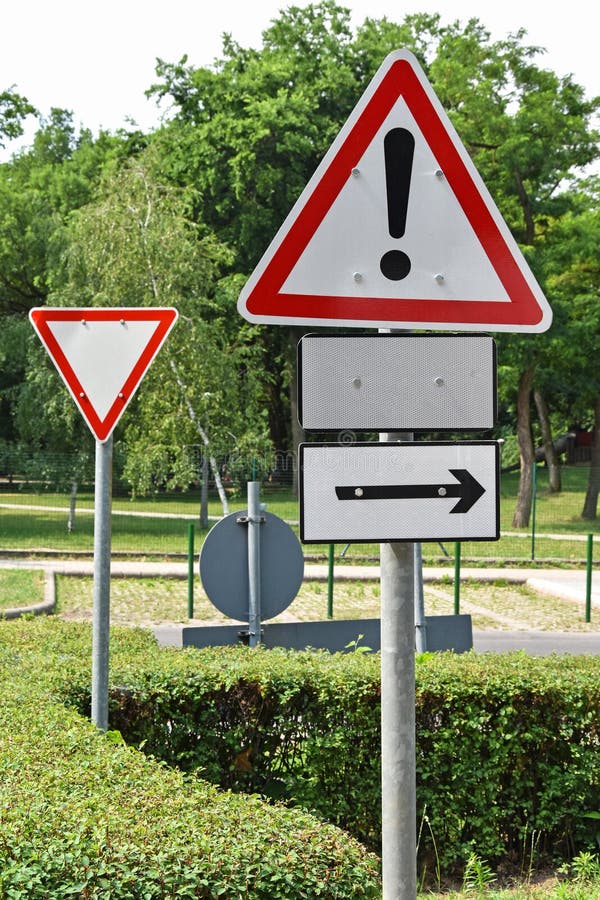
Yield and Danger Traffic Signs Stock Photo Image of mark, sign 95813700
Yield to the right. This second essential right-of-way rule dictates who must yield when two or more vehicles arrive at an intersection in unison. When two cars arrive at the same time, motorists must yield the right-of-way to the vehicle to their right. If vehicles arrive at every entrance to the intersection simultaneously, eye-contact can be.
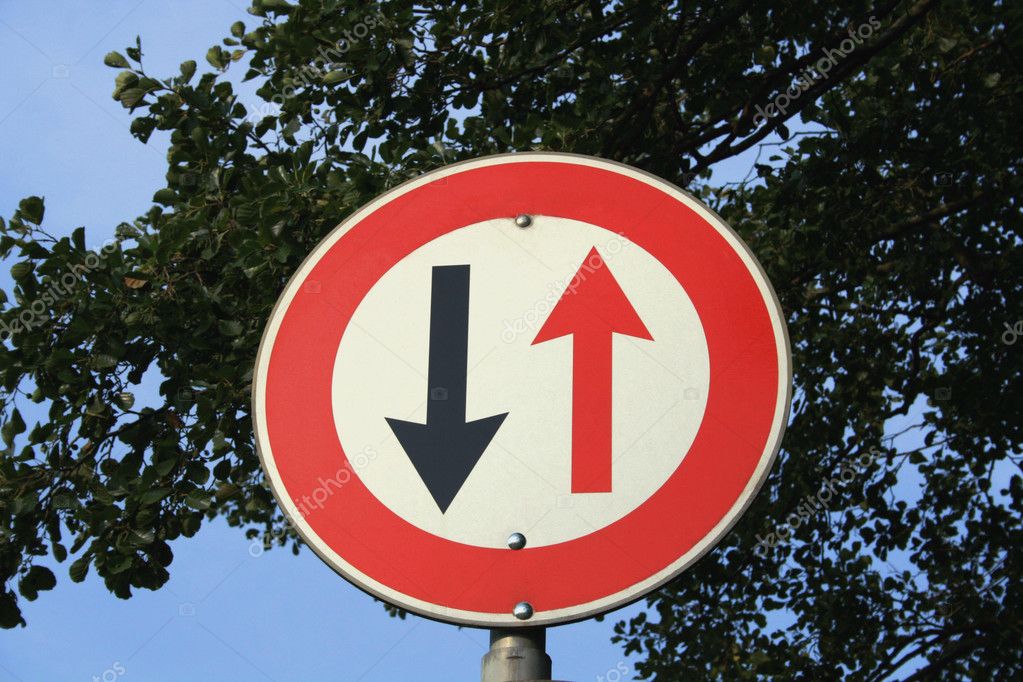
Yield To Traffic Road Sign ⬇ Stock Photo, Image by © alexalexl 1363075
Yield to Oncoming Traffic sign - standard traffic sign product that complies and follows specifications, standards and guidelines as authorized by the Ministry of Transportation and Infrastructure for use along the provincial highway system of British Columbia.. Yield to oncoming traffic sign. Item # Size Usage; R-001-Tdu 40 x 30: Loc / Low.

How to Draw Yield to Traffic Sign SLD YouTube
To Oncoming Traffic:. YIELD signs may be used instead of STOP signs if engineering judgment indicates that one or more of the following conditions exist: When the ability to see all potentially conflicting traffic is sufficient to allow a road user traveling at the posted speed, the 85th-percentile speed, or the statutory speed to pass.

What Do I Do at a Yield Sign in Florida? What are the Rules? Allen Law Firm, P.A.
Iran road sign - priority to oncoming traffic.svg 512 × 512; 1 KB Israel road sign 307.svg 500 × 500; 4 KB Italian traffic signs - dare precedenza nei sensi unici alternati.svg 564 × 564; 4 KB

Regulatory Signs STOP and YIELD Eastern Metal Signs and Safety
The yield sign is one of these. To avoid confusion, we dedicate this article solely to this vital sign and the laws and regulations behind it. What does a Yield sign mean? The yield sign is a regulatory sign. At a yield sign, drivers must slow down and yield the right-of-way to pedestrians and vehicles that are approaching from another direction.

RSHIRB91 Yield to Traffic Sign WorkZone Safety
Meaning, definition, shape, location, color, and more. A yield sign is a regulatory traffic sign that instructs drivers to slow down and, if necessary, stop to allow other road users (vehicles and pedestrians) the right-of-way before proceeding. Characterized by its inverted triangle shape, the sign has a red border, a white background, and.

Yield to Traffic Which you often have to do on th… Flickr
This road narrows sign indicates that the road ahead narrows and may require drivers to yield the right-of-way or merge with oncoming traffic. 2.7. T Junction Road Signs. This t-junction sign alerts drivers to an upcoming T-shaped intersection, where the road they are on will intersect with another road at a right angle. 2.8. Give Way Signs
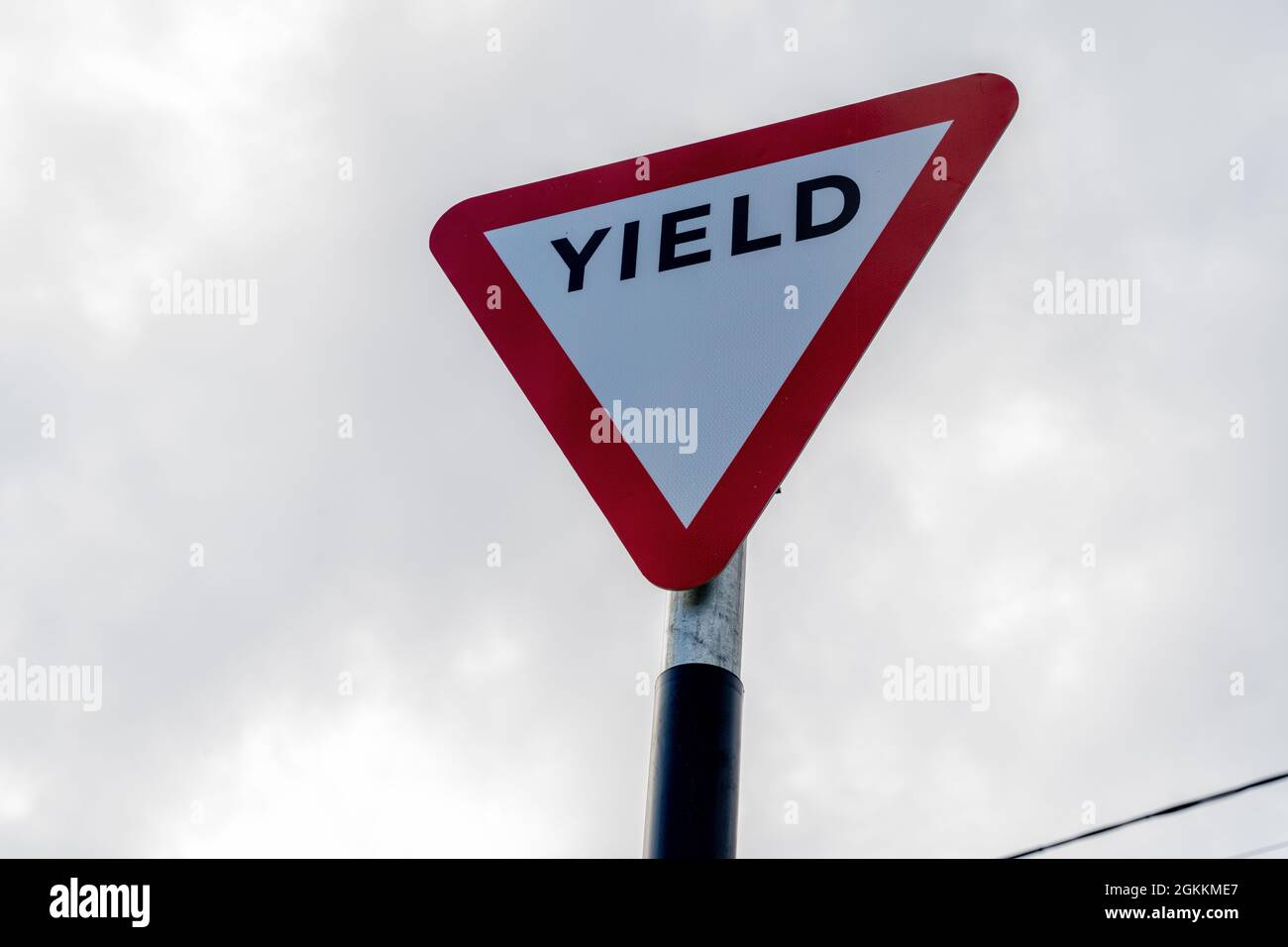
Yield Sign, traffic sign indicating traffic to yield to traffic at road junction or
At intersections without signs or signals, yield to traffic coming from your right. When turning left, yield to oncoming traffic going straight. They have the right-of-way. At a 4-way stop, the first vehicle to arrive goes first. If multiple vehicles arrive at the same time, yield to the vehicle on your right.

Give Way Sign, Give way or yield to traffic Stock Photo Alamy
R1-2 Yield Sign. A yield sign informs the driver to do the following: Slow down, defer to oncoming or intersecting traffic, stop when necessary, proceed when safe, and remain aware of oncoming vehicles. Yield traffic signs were added to the Manual on Uniform Traffic Control Devices in 1954 to assign right of way at intersections where a stop.